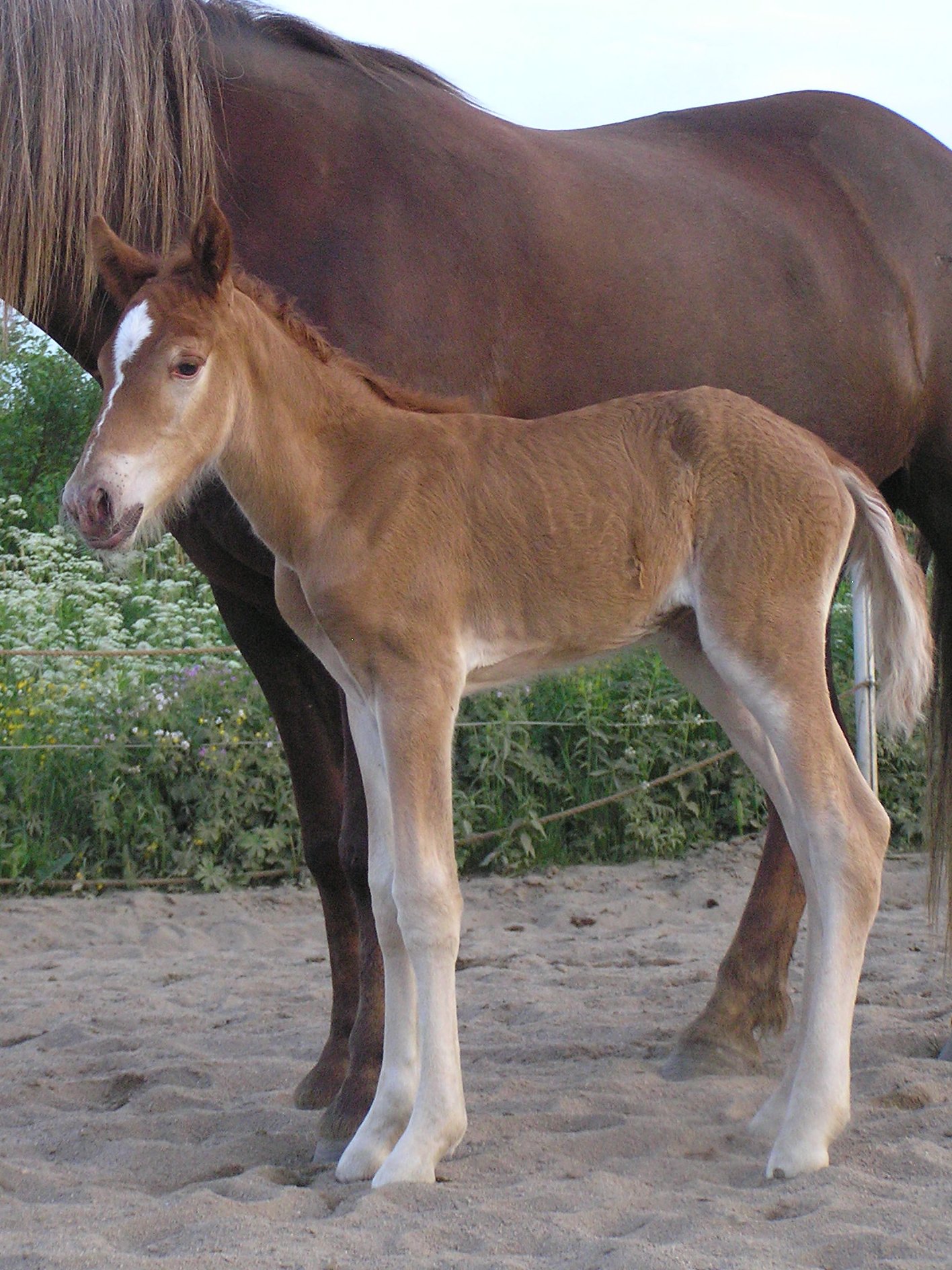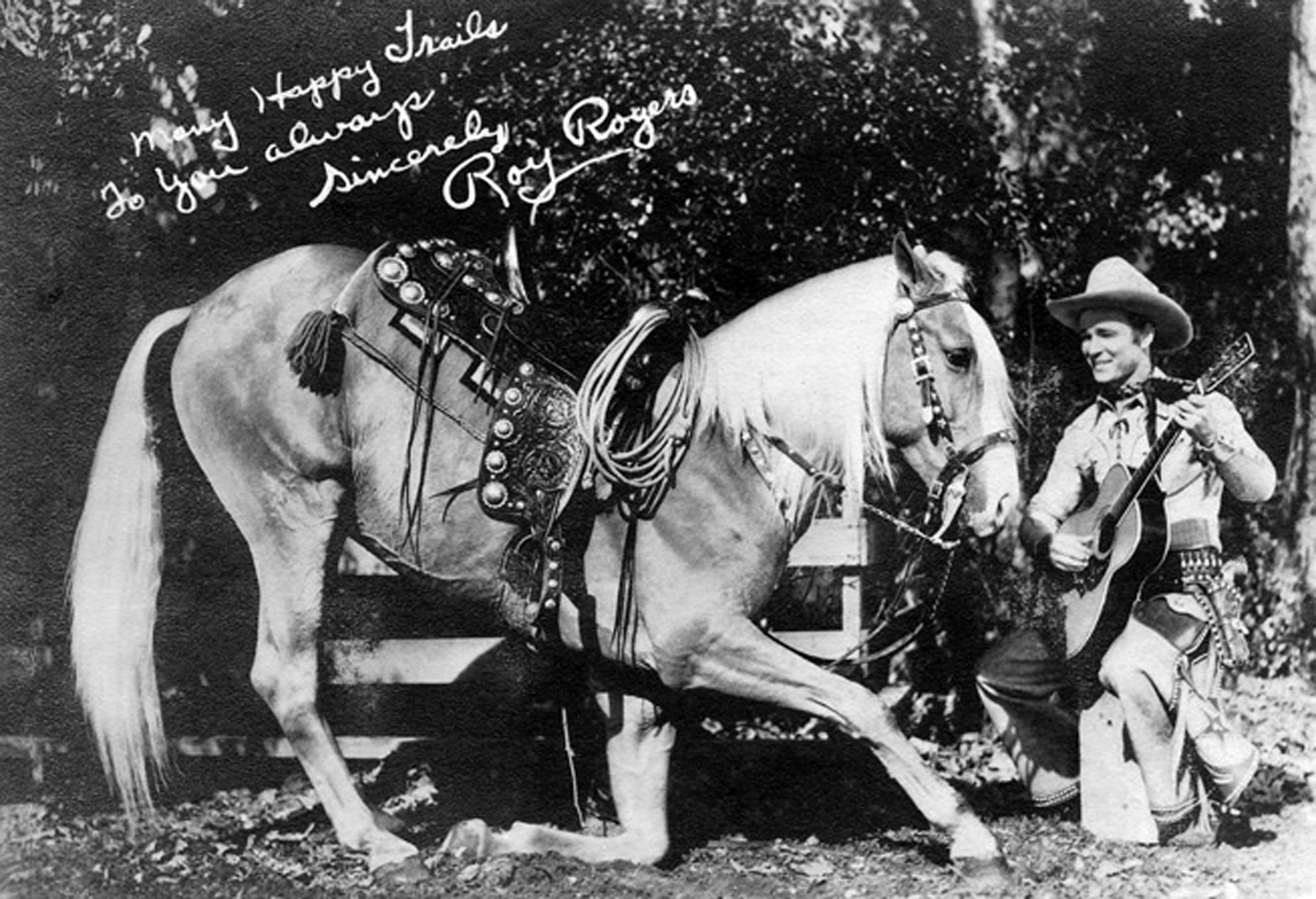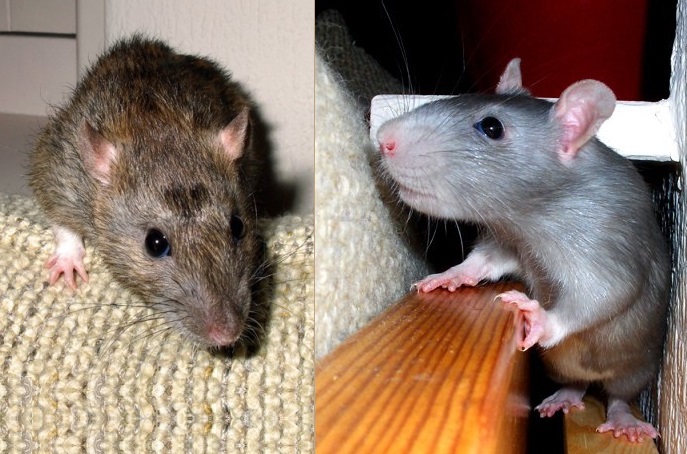|
Palomino
Palomino is a equine coat color, genetic color in horses, consisting of a gold coat and white mane (horse), mane and tail; the degree of whiteness can vary from bright white to yellow. The palomino color derived from the breeding of Spanish horses in the United States. Genetically, the palomino color is created by a single allele of a dilution gene called the cream gene working on a "red" (chestnut (coat), chestnut) base coat. Palomino is created by a genetic mechanism of incomplete dominance, hence it is not considered true-breeding. However, most color breed registries that record palomino horses were founded before equine coat color genetics were understood as well as they are today, therefore the standard definition of a palomino is based on the visible coat color, not heritability nor the underlying presence of the dilution gene. Due to their distinct color, palominos stand out in a show ring, and are much sought after as parade horses. They were particularly popular in m ... [...More Info...] [...Related Items...] OR: [Wikipedia] [Google] [Baidu] |
Cream Gene
The cream gene is responsible for a number of Equine coat color, horse coat colors. Horses that have the cream gene in addition to a base coat color that is chestnut (coat), chestnut will become palomino if they are heterozygous, having one copy of the cream gene, or cremello, if they are homozygous. Similarly, horses with a Bay (horse), bay base coat and the cream gene will be Buckskin (horse), buckskin or perlino. A black base coat with the cream gene becomes the not-always-recognized smoky black or a smoky cream. Cream horses, even those with blue eyes, are not white (horse), white horses. Dilution coloring is also not related to any of the Pinto horse, white spotting patterns. The cream gene (''CCr'') is an Dominance relationship, incomplete dominant allele with a distinct dosage effect. The DNA sequence responsible for the cream colors is the cream allele, which is at a specific Locus (genetics), locus on the SLC45A2, solute carrier family 45 member 2 (''SLC45A2'') ge ... [...More Info...] [...Related Items...] OR: [Wikipedia] [Google] [Baidu] |
Champagne Gene
The champagne gene is a simple dominant allele responsible for a number of rare horse coat colors. The most distinctive traits of horses with the champagne gene are the hazel eyes and pinkish, freckled skin, which are bright blue and bright pink at birth, respectively. The coat color is also affected: any hairs that would have been red are gold, and any hairs that would have been black are chocolate brown. If a horse inherits the champagne gene from either or both parents, a coat that would otherwise be chestnut is instead gold champagne, with bay corresponding to amber champagne, seal brown to sable champagne, and black to classic champagne. A horse must have at least one champagne parent to inherit the champagne gene, for which there is now a DNA test. Unlike the genes underlying tobiano, dominant white, frame overo spotting and the Leopard complex common to the Appaloosa, the champagne gene does not affect the location of pigment-producing cells in the skin. Nor does the ... [...More Info...] [...Related Items...] OR: [Wikipedia] [Google] [Baidu] |
Chestnut (coat)
Chestnut is a hair coat color of horses consisting of a reddish-to-brown coat with a mane and tail the same or lighter in color than the coat. Chestnut is characterized by the absolute absence of true black hairs. It is one of the most common horse coat colors, seen in almost every breed of horse. Chestnut is a very common coat color but the wide range of shades can cause confusion. The lightest chestnuts may be mistaken for palominos, while the darkest shades can be so dark they appear black. Chestnuts have dark brown eyes and black skin, and typically are some shade of red or reddish brown. The mane, tail, and legs may be lighter or darker than the body coat, but unlike the bay they are never truly black. Like any other color of horse, chestnuts may have pink skin with white hair where there are white markings, and if such white markings include one or both eyes, the eyes may be blue. Chestnut foals may be born with pinkish skin, which darkens shortly afterwards. Chest ... [...More Info...] [...Related Items...] OR: [Wikipedia] [Google] [Baidu] |
Equine Coat Color Genetics
Equine coat color genetics determine a horse's coat color. Many colors are possible, but all variations are produced by changes in only a few genes. bay horse, Bay is the most common color of horse, followed by black and chestnut. A change at the ''agouti'' locus is capable of turning bay to black horse, black, while a mutation at the ''extension'' locus can turn bay or black to chestnut horse, chestnut. These three "base" colors can be affected by any number of dilution genes and patterning genes. The dilution genes include the wildtype dun gene, believed to be one of the oldest colors extant in horses and donkeys. The dun gene lightens some areas of the horse's coat, while leaving a darker dorsal stripe, mane, tail, face, and legs. Depending on whether it acts on a bay, black, or chestnut base coat, the dun gene produces the colors known as bay dun, grullo, and red dun. Another common dilution gene is the cream gene, responsible for palomino, buckskin, and cremello horses. ... [...More Info...] [...Related Items...] OR: [Wikipedia] [Google] [Baidu] |
Trigger (horse)
Trigger (July 4, 1934 – July 3, 1965) was a palomino horse which appeared in American Western films with its owner and rider, cowboy star Roy Rogers. Pedigree Trigger, originally named Golden Cloud, was born in San Diego, California. Though often mistaken for a Tennessee Walking Horse, his sire was a Thoroughbred and his dam a grade (unregistered) mare that, like Trigger, was a palomino. Movie director William Witney, who directed Roy and Trigger in many of their movies, claimed a slightly different lineage, that his sire was a "registered" palomino stallion (though no known palomino registry existed at the time of Trigger's birth) and his dam was by a Thoroughbred and out of a " cold-blood" mare. Horses other than Golden Cloud also portrayed "Trigger" over the years, none of which was related to Golden Cloud; the two most prominent were palominos known as "Little Trigger" and "Trigger Jr." (a Tennessee Walking Horse listed as "Allen's Gold Zephyr" in the Tennessee Walking Hors ... [...More Info...] [...Related Items...] OR: [Wikipedia] [Google] [Baidu] |
Equine Coat Color
Horses exhibit a diverse array of coat colors and distinctive horse markings, markings. A specialized vocabulary has evolved to describe them. While most horses remain the same coat color throughout life, some undergo gradual color changes as they age. Most horse markings, white markings are present at birth, and the underlying skin color of a healthy horse does not change. Certain coat colors are also associated with specific breeds, such as the Friesian, which is almost exclusively black. The basic outline of equine coat color genetics has largely been resolved, and DNA tests to determine the likelihood that a horse will have offspring of a given color have been developed for some colors. Discussion, research, and even controversy continue about some of the details, particularly those surrounding spotting patterns, color sub-shades such as "sooty (gene), sooty" or "flaxen gene, flaxen", and horse markings, markings. Basic coat colors The two basic pigment colors of horse hair ... [...More Info...] [...Related Items...] OR: [Wikipedia] [Google] [Baidu] |
Flaxen Gene
Flaxen is a genetic trait in which the mane (horse), mane and tail (horse), tail of chestnut (coat), chestnut-colored horses are noticeably lighter than the body coat color, often a golden blonde shade. Manes and tails can also be a mixture of darker and lighter hairs. Certain horse breeds such as the Haflinger carry flaxen chestnut coloration as a breed trait. It is seen in chestnut-colored animals of other horse breeds that may not be exclusively chestnut. The degree of expression of the trait is highly variable, with some chestnuts being only slightly flaxen while others are more so. Flaxen was once thought to be produced by a recessive allele, based on preliminary studies, proposed as ''Ff'' for ''flaxen''. However, more recently it is thought that it may actually be polygenic, influenced by multiple genes. Some chestnut horses that do not exhibit much flaxen may nonetheless produce strongly flaxen offspring. Studies on Morgan horses have indicated that the flaxen trait i ... [...More Info...] [...Related Items...] OR: [Wikipedia] [Google] [Baidu] |
Dun Gene
The dun gene is a dilution gene that affects both red and black pigments in the equine coat color, coat color of a horse. The dun gene lightens most of the body while leaving the mane (horse), mane, tail, legs, and primitive markings the shade of the undiluted base coat color. A dun horse always has a dark dorsal stripe down the middle of its back, usually has a darker face and legs, and may have transverse striping across the shoulders or horizontal striping on the back of the forelegs. Body color depends on the underlying equine coat color genetics, coat color genetics. A classic "bay dun" is a gray-gold or tan, characterized by a body color ranging from sandy yellow to reddish brown. Duns with a chestnut (horse color), chestnut base may appear a light tan shade, and those with black horse, black base coloration are a smoky gray. Manes, tails, primitive markings, and other dark areas are usually the shade of the undiluted base coat color. The dun gene may interact with all other ... [...More Info...] [...Related Items...] OR: [Wikipedia] [Google] [Baidu] |
Sooty (gene)
A sooty or smutty Equine coat color, horse coat color is characterized by black or darker hairs mixed into a horse's coat, typically concentrated along the topline of the horse and less prevalent on the underparts. The effect is especially pronounced on buckskin (horse), buckskins and palominos. Sootiness is believed to be an inherited trait involving multiple genes, however the details are not yet known. Horses without any visible sooty coloration are termed "clear-coated." On bay horse, bay-based horses, the most common type of sooty is black countershading. This darkens the top side of the horse, sometimes turning the back, croup, and shoulder almost black, while leaving the underside of the horse redder. At its darkest, this effect may be confused with Seal brown (horse), seal brown, while in minimal forms the dark hairs may not be noticed. Dapples of red often appear within the dark region. Many horses with the sooty trait have a darker mask on the bony parts of the face. O ... [...More Info...] [...Related Items...] OR: [Wikipedia] [Google] [Baidu] |
Color Breed
{{no footnotes, date=January 2013 A color breed refers to groupings of horses whose registration is based primarily on their coat color, regardless of the horse's actual horse breed, breed or breed type. Some color breeds only register horses with a desired coat color if they also meet specific pedigree criteria, others register animals based solely on color, regardless of parentage. A few pedigree-based color breeds, notably the American Paint Horse and the Appaloosa, confronted with the reality of many animals born without the proper color even though they are from two registered parents, have modified their rules to allow registration of animals with the proper pedigree even if they do not possess the proper color. On the other hand, with the prevalence of DNA testing for parentage, many horses once forced into color breed status due to being born the "wrong" color and thus deemed undesirable or of questionable parentage by many regular breed registry, breed registries with c ... [...More Info...] [...Related Items...] OR: [Wikipedia] [Google] [Baidu] |
Dilution Gene
A dilution gene is any one of a number of genes that act to create a lighter coat color in living creatures. There are many examples of such genes: General Diluted coat colors have melanocytes, but vary from darker colors due to the concentration or type of these pigment-producing cells, not their absence. Pigment dilution, sometimes referred to as hypomelanism, has been called leucism, albinism (perfect, impartial, or dilute), ghosting, paling, and isabellinism. *Albinism describes a condition where pigment cells synthesize little or no pigment *Leucism describes a condition that creates loss of pigment cells Cats Cat coat genetics discusses many dilution genes in cats. Dogs In dogs, a mutation of the ''MLPH'' locus known as the dilute gene causes eumelanin to lighten while pheomelanin remains almost unchanged. Dogs of some breeds with the dilute gene often suffer from colour dilution alopecia (CDA). Appearance Of the colour shades found in the coat of dogs, the light brown ... [...More Info...] [...Related Items...] OR: [Wikipedia] [Google] [Baidu] |









